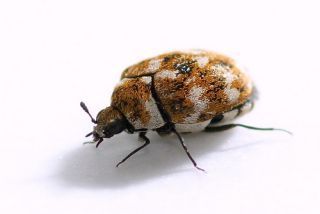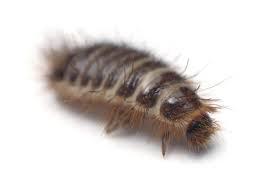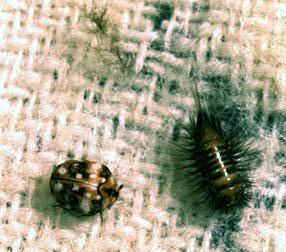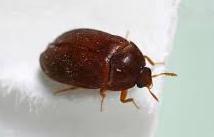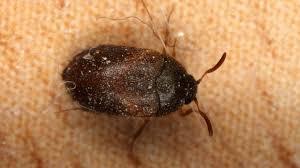Effective bed bug removal in Sleaford
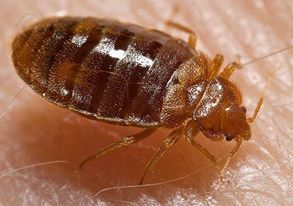
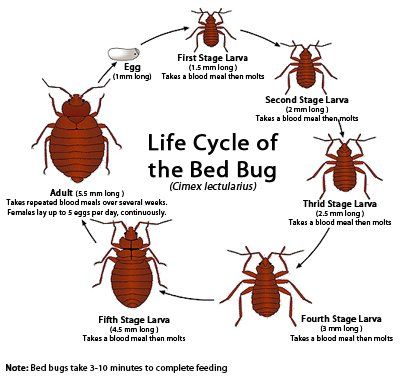
Bed Bugs
Bed bugs, or bedbugs are parasitic insects of the cimicid family that feed exclusively on blood . Cimex lectularius , the common bed bug, is the best known, as it prefers to feed on human blood. Other Cimex species specialize in other animals, e.g., bat bugs , such as Cimex pipistrelli (Europe), Cimex pilosellus (western US), and Cimex adjunctus (entire eastern US).
The name "bed bug" derives from the preferred habitat of Cimex lectularius : warm houses and especially near or inside beds and bedding or other sleep areas. Bed bugs are mainly active at night, but are not exclusively nocturnal . They usually feed on their hosts without being noticed.
A number of adverse health effects may result from bed bug bites, including skin rashes , psychological effects, and allergic symptoms .They are not known to transmit any pathogens as disease vectors . Certain signs and symptoms suggest the presence of bed bugs; finding the insects confirms the diagnosis.
Bed bugs have been known as human parasites for thousands of years. At a point in the early 1940s, they were mostly eradicated in the developed world , but have increased in prevalence since 1995, likely due to pesticide resistance and governmental bans on effective pesticides. Because infestation of human habitats has been on the increase, bed bug bites and related conditions have been on the rise as well.
The name "bed bug" derives from the preferred habitat of Cimex lectularius : warm houses and especially near or inside beds and bedding or other sleep areas. Bed bugs are mainly active at night, but are not exclusively nocturnal . They usually feed on their hosts without being noticed.
A number of adverse health effects may result from bed bug bites, including skin rashes , psychological effects, and allergic symptoms .They are not known to transmit any pathogens as disease vectors . Certain signs and symptoms suggest the presence of bed bugs; finding the insects confirms the diagnosis.
Bed bugs have been known as human parasites for thousands of years. At a point in the early 1940s, they were mostly eradicated in the developed world , but have increased in prevalence since 1995, likely due to pesticide resistance and governmental bans on effective pesticides. Because infestation of human habitats has been on the increase, bed bug bites and related conditions have been on the rise as well.
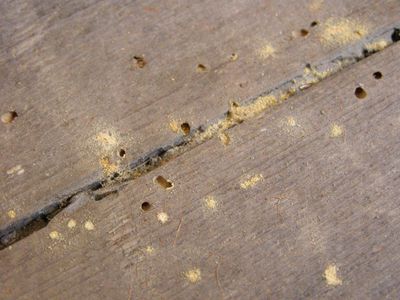
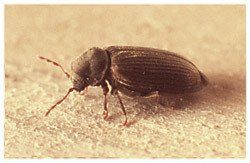
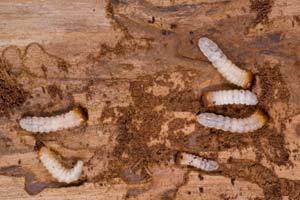
Wood affected with woodworm
Signs of woodworm usually consist of holes in the wooden item, with live infestations showing powder (faeces) around the holes. The size of the holes varies, but are typically 1mm to 1.5mm in diameter for the most common household species. Adult beetles which emerged from the wood may also be found in the summer months.
Typically the adult beetles lay eggs on, or just under the surface of, a wooden item. The resulting grubs then feed on the wooden item causing both structural and cosmetic damage, before pupating and hatching as beetles which then breed, lay eggs, and repeat the process causing further damage.
As the beetles evolved consuming dead wood in various forest habitats, most grubs, if not all, typically require that the wooden item contain a higher moisture content than is normally found in wooden items in a typical home.
A building with a woodworm problem in the structure or furniture probably/possibly also has a problem with excess damp. The issue could be lack of ventilation in a roof space, cellar or other enclosed space within an otherwise dry building.
Whilst damp is a leading factor resulting in woodworm some species of woodboring insect, such as the Woodboring Weevil , are only found in instances where fungal rot has already begun to occur.
Treatment
Woodworm infestation is generally controlled with chemical insecticides. However, it is also advisable to investigate and solve possible damp issues, as dry wood is not usually affected, and wood that remains damp may be re-infected at a later date.
The use of "electrical insect killers" to attract and kill the adult beetles before they can breed can be used alongside conventional chemical treatments with the intention of killing the adult beetles before they can breed, but the effectiveness of such an approach is not known.
One other approach is heat treatment, which takes 24 hours (Thermo Lignum).
Additionally there are freezing treatments, which are quite effective, though taking 2–3 weeks, and which can cause a certain amount of damage. They are quite costly.
Low Oxygen is effective, but very time consuming, up to eight weeks, is often expensive.
Nathrenus verbasci
The varied carpet beetle ( Anthrenus verbasci ) is a 3 mm-long beetle belonging to the family Dermestidae .
This beetle in larval form is common in houses where it usually does little or no noticeable harm, but it is a feared pest in natural history museums, where it can seriously damage biological specimens . While adults are pollen grazers, larvae feed on natural fibers and can damage carpets, furniture, clothing and insect collections. As the beetles are extremely common in gardens in the summer it is impossible to eradicate them completely from a normal home. Regular vacuuming will keep their numbers down.
The larval form is known as a woolly bear , a name it shares with the larvae of Arctia caja and many other moths of the family Arctiidae.
A. verbasci was the first insect to be shown to have an annual circadian rhythm and to date remains a classic example of circannual cycles in animals.
Identification
Larval form of Anthrenus verbasci (4.6 mm long)
Adult A. verbasci range from 1.7 to 3.5 mm (0.07 to 0.14 in) in length. The body is rounded, almost spherical. Elytra and pronotum have an irregular pattern of white, brownish and yellowish patches formed by scales of different colours. Whitish scales are condensed along the lateral margins of the pronotum and on the elytra , where they form three bright, wavy transversal bands. In addition, their antennae are 11-segmented with a club of 3 segments.
The larval form of A. verbasci are roughly 4–5 millimetres (0.16–0.20 in) in length. The larvae are elongate and densely hairy. The body is covered in a pattern of alternating light and dark-brown stripes. The body is usually wider at the back than at the front and also bears 3 pairs of hair tufts along its rear abdomen that can be used for self-defense.
Distribution
This species is present in most of Europe , in the eastern Palearctic ecozone , in the Near East , in the Nearctic ecozone and in North Africa .
Natural history
Life cycle:
Larva of A. verbasci . Front view
A. verbasci has an unusual life cycle for an insect, developing from larvae to adult in 1–3 years, depending on the environmental conditions. Larvae hatch from eggs in the spring and early summer, often in the nests of birds (including those of the house sparrow and house swift ) or around stored fabrics.
Larvae feed on keratin and chitin of natural fibers (dead insects, animal hair and feathers) throughout their development, eventually experiencing a dormancy period (also known as diapause ) prior to pupation into the adult stage. The length of the dormancy appears to depend on environmental factors, with the most likely zeitgeber being photoperiod .
Adults emerge between late May and early August, flying to and feeding on the pollen and nectar of flowering plants. The life expectancy of the beetle is about two weeks. During this period, mating occurs and the eggs are laid, either close to the human environs or in bird nests, tree hollows and similar, dry places where larvae can find their food. Then the cycle begins anew.
Predators:
Among the natural predators of A. verbasci , one of the most well-studied is the parasitoid wasp Laelius pedatus . Upon discovering an A. verbasci larva, a female wasp will land on the larva's dorsal side and attempt to line up its long, stinger-like ovipositor for a paralyzing blow to the thorax. In response, the larva will erect long hairs on their abdomen and attempt to brush these hairs against the encroaching wasp. The hairs detach and stick to the wasp on contact, presumably causing some sort of irritation. Evidently, such irritation is not enough to deter an attack on A. verbasci larvae, as the vast majority of attacks are successful. Such a defense, however, has been shown to be effective for the closely related species Anthrenus flavipes , which has slightly longer hairs than A. verbasci .
After a single successful sting, the beetle is permanently paralyzed. The entire process from landing to complete paralysis lasts approximately 40 seconds. L. pedatus does not lay eggs immediately after the beetle is paralyzed, waiting as long as 24 hours before oviposition. During this time, she grooms herself, removing any hairs that might have stuck to her during the attack. During this lengthy process she appears to monitor the larva’s state of paralysis by repeatedly biting it and monitoring its reaction. Once sufficiently clear of hairs, the wasp creates a bare patch on the larva’s abdomen and lays 2–4 eggs. Eggs hatch in 3–4 days and the larvae feed on the beetle for 3–7 days, eventually killing the host. They then spin cocoons near the empty shell of the host, emerging some time later as adult wasps.
Interaction with humans: Anthraenus Verbasci caught on a sticky blunder trap in a museum.
The larvae of A. verbasci are a common household pest. Adult beetles usually lay their eggs in air ducts, in closets, under furniture, or under baseboards. Once hatched and until they pupate into adults, the larvae hide in dark, undisturbed areas and feed on organic material. The larvae are thus responsible for the damage of various items, such as furniture, clothing, blankets, furs, and carpets. They are commonly found in musical instruments which have been stored for lengthy periods of time, feeding on pads and felts most commonly found in woodwind instruments. Collections of specimens, especially of insects, are also vulnerable to attack, making A. verbasci a common pest in museums. Infestations can be prevented by regular vacuum cleaning, dry cleaning or airing clothing outside, placing naphthalene balls in closets, and removing abandoned bird and insect nests attached to the building. Signs of an infestation include the presence of damaged articles, molted larval skins in dark areas, and an abundance of adult beetles near windows. Susceptible people may also find that shed hairs from the larvae cause irritated itchy welts that may be confused with bedbug bites. Deterring or killing A. verbasci can be accomplished using insecticides , oxygen deprivation, freezing, and pheromone and scent traps.
